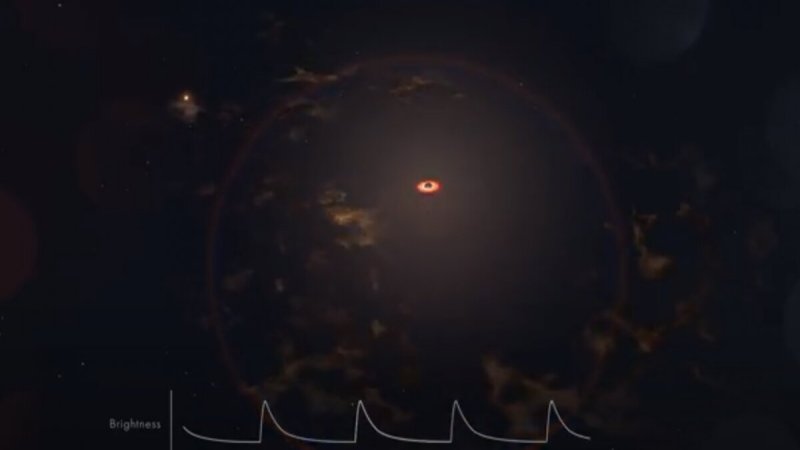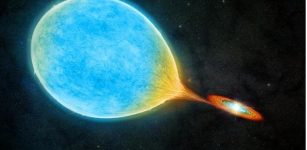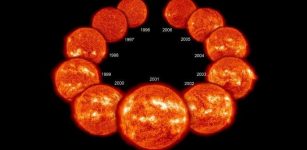Rare Cosmic Phenomenon Observed In Constellation Pictor
Eddie Gonzales Jr. – MessageToEagle.com – When astronomers observed strange lights in the southern constellation Pictor they thought the source was a supernova, but they were wrong.
Six years after its initial discovery, the latest studies show the astronomers watched a rare cosmic phenomenon called ASASSN-14ko is actually periodic flaring from a galaxy where a supermassive black hole gives off bursts of energy every 114 days as it tears off chunks of an orbiting star.
Screenshot of the NASA-produced animation showing a giant star being slowly devoured as it orbits the galaxy’s central black hole. Image is courtesy of NASA’s Goddard Space Flight Center.
Active galaxies, such as the host of ASASSN-14ko, have unusually bright and variable centers. These objects produce much more energy than the combined contribution of all their stars. Astrophysicists think this is due to gravitational and frictional forces heating up a swirling disk of gas and dust that accumulates around the central supermassive black hole. The black hole slowly consumes the material, which creates low-level, random changes in the light emitted by the disk.
This is the first unambiguous example of such clockwork behavior from an active galaxy. Periodically recurring flares, such as those from ASASSN-14ko, could be evidence of observationally elusive cosmic phenomena that have been previously predicted by theorists.
“Knowing the schedule of this extragalactic Old Faithful allows us to coordinate and study it in more detail,” Anna Payne of University of Hawai’i at Mānoa said in a press statement.
Based on this discovery, the astronomers predicted that the galaxy would experience another burst on May 17 of last year and coordinated ground- and space-based facilities to make observations. They have since successfully predicted and witnessed flares on September 7 and December 26.
“ASAS-SN is designed to probe the physics of our universe by looking for transient and variable events,” researcher Thomas Holoien said.
“It’s exciting that the luminous object we originally thought was a violent supernova explosion—which would be interesting in its own right, but more commonplace—turned out to be a long-sought-after cosmic event.”
So, what causes the repeated flares? The team considered several possible explanations, but think the most likely is what’s called a partial tidal disruption event.
In this instance, instead of a star being obliterated by interaction with the black hole, it would be slowly stripped during each orbit. The flares occur when the lost material—equal to three times the mass of Jupiter at each pass—falls in towards the black hole.
The astronomers are unsure how long the flares will persist. The star can’t lose mass forever, and while scientists can estimate the amount of mass it loses during each orbit, they don’t know how much it had originally.
Written by Eddie Gonzales Jr. – MessageToEagle.com Staff











